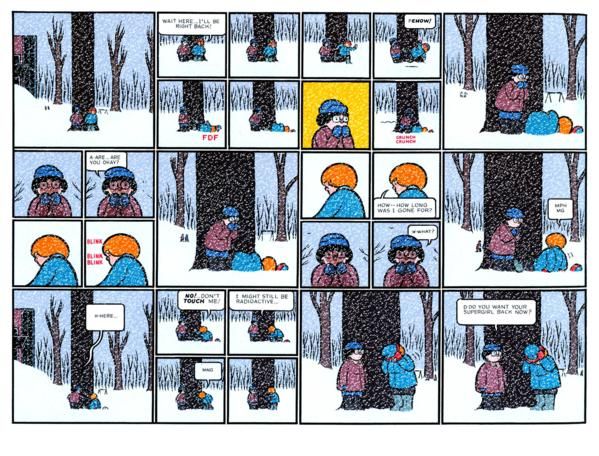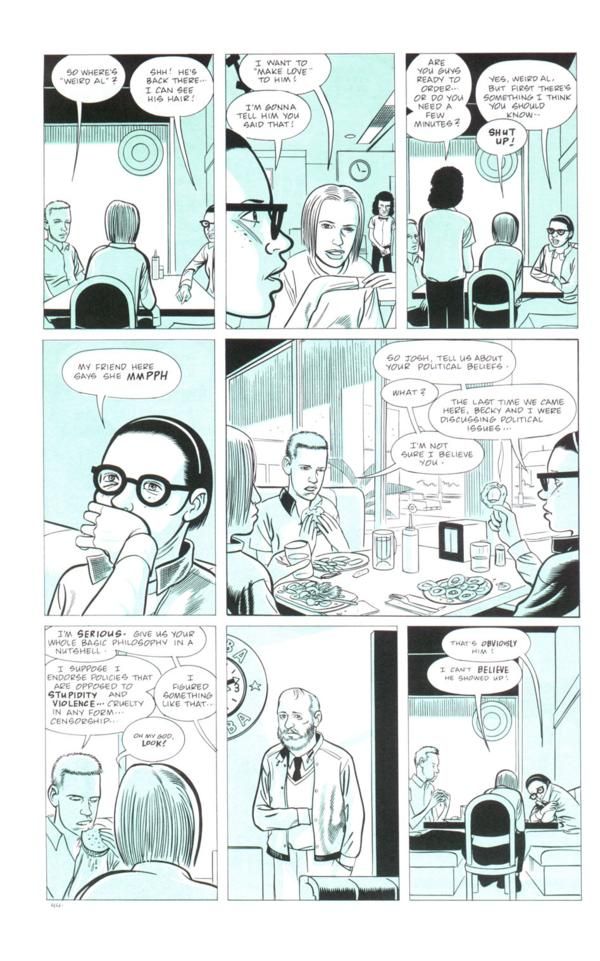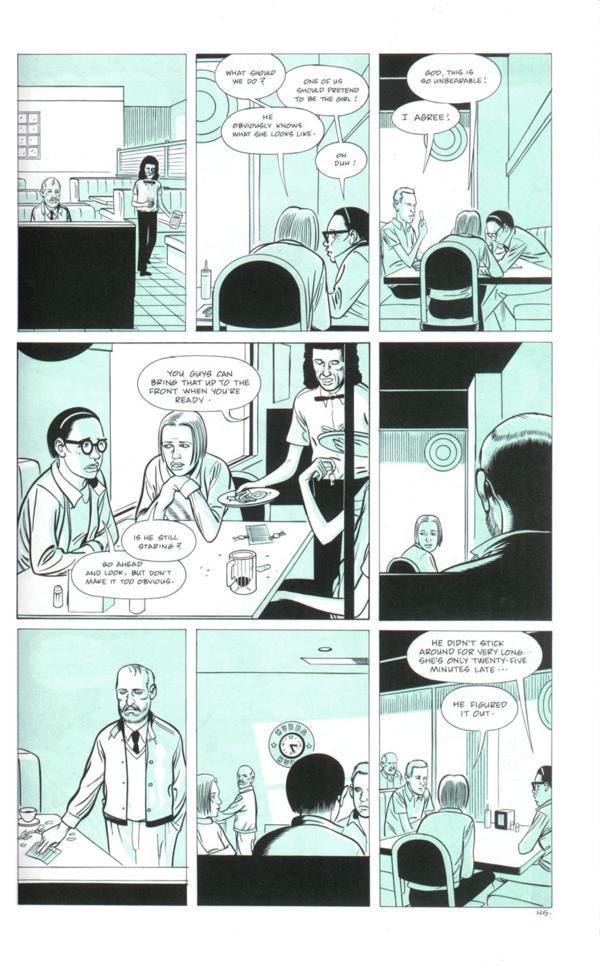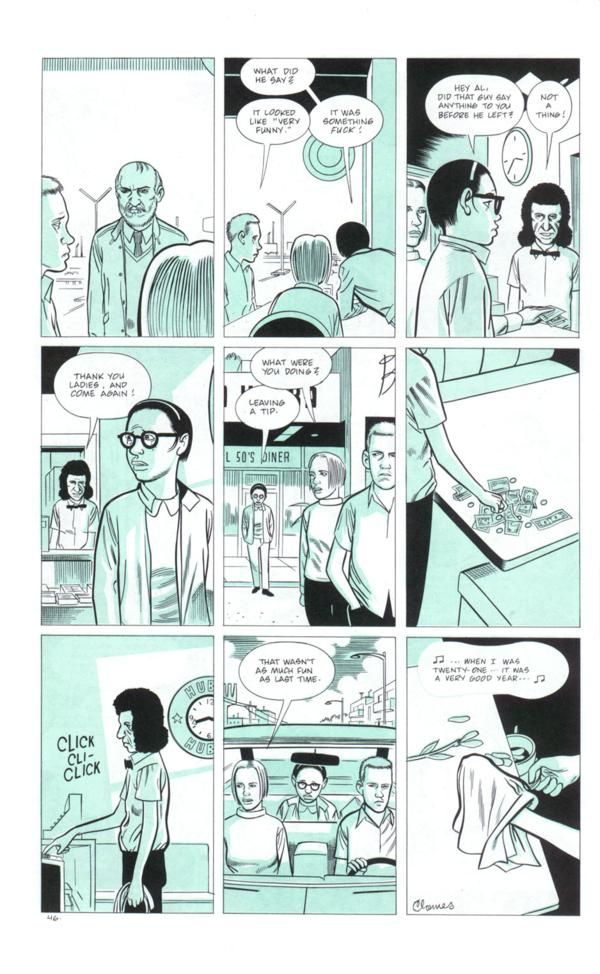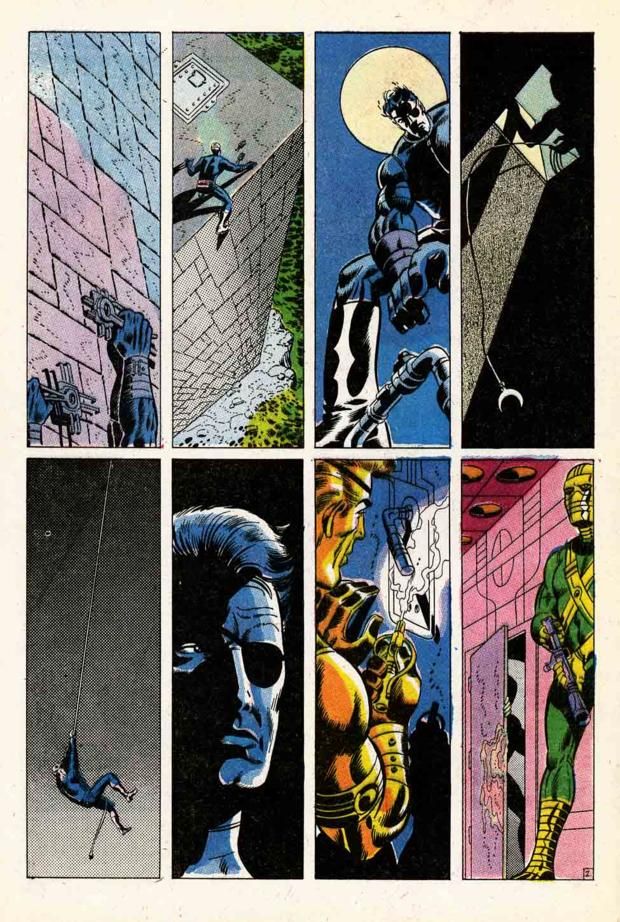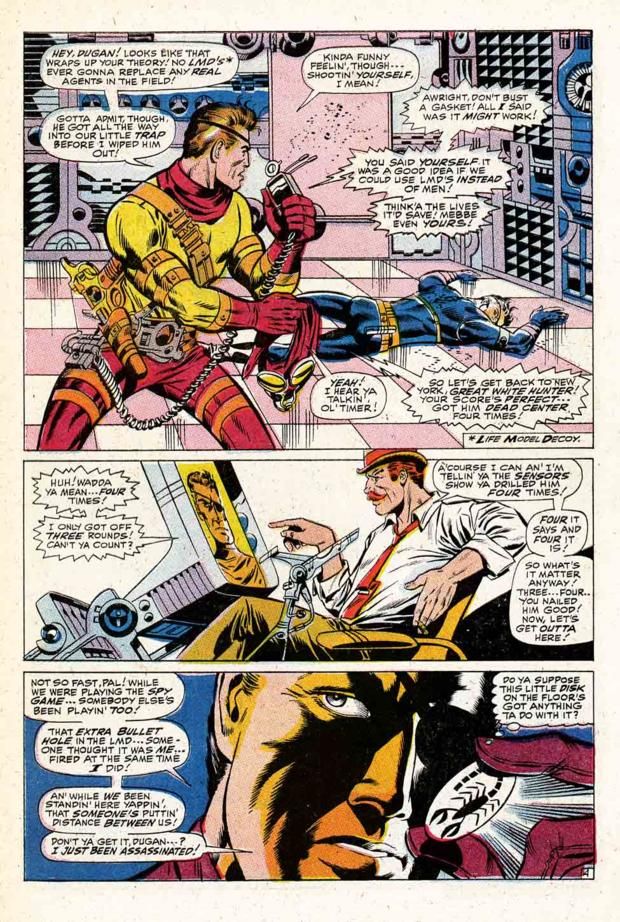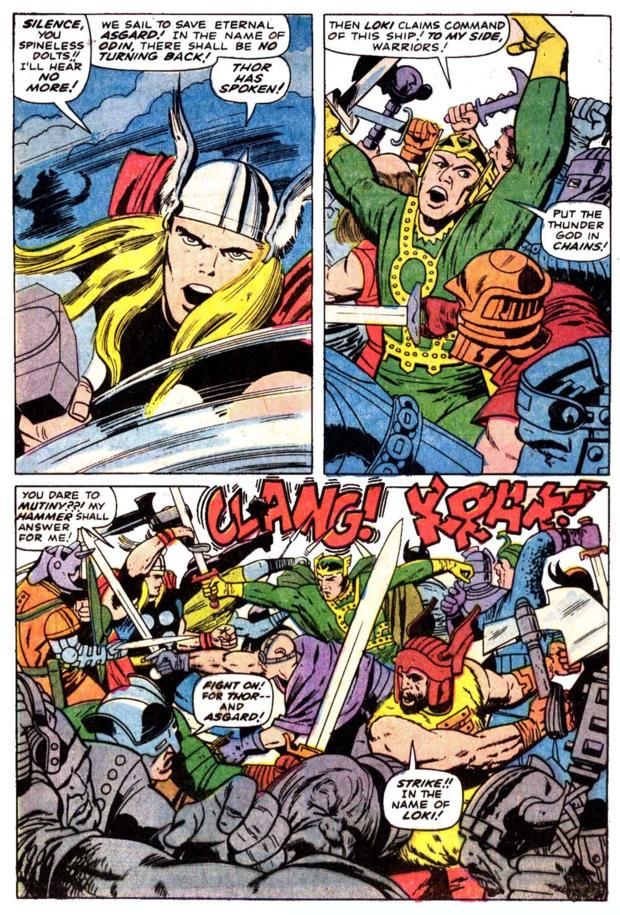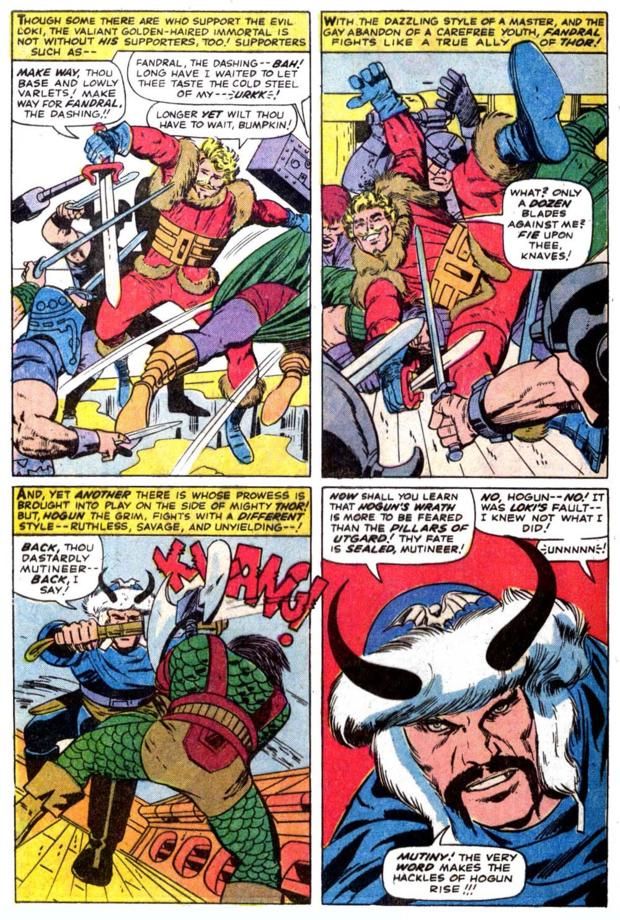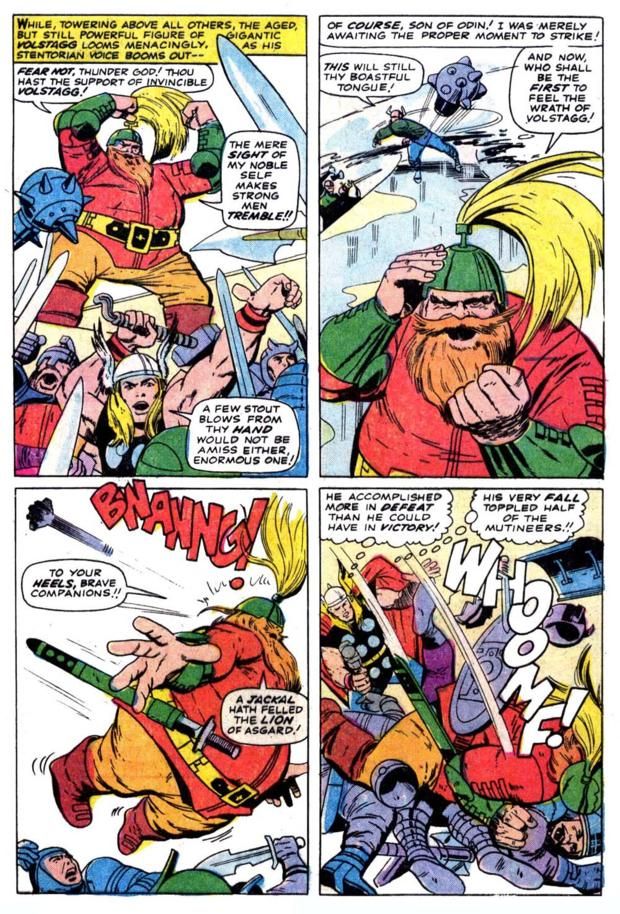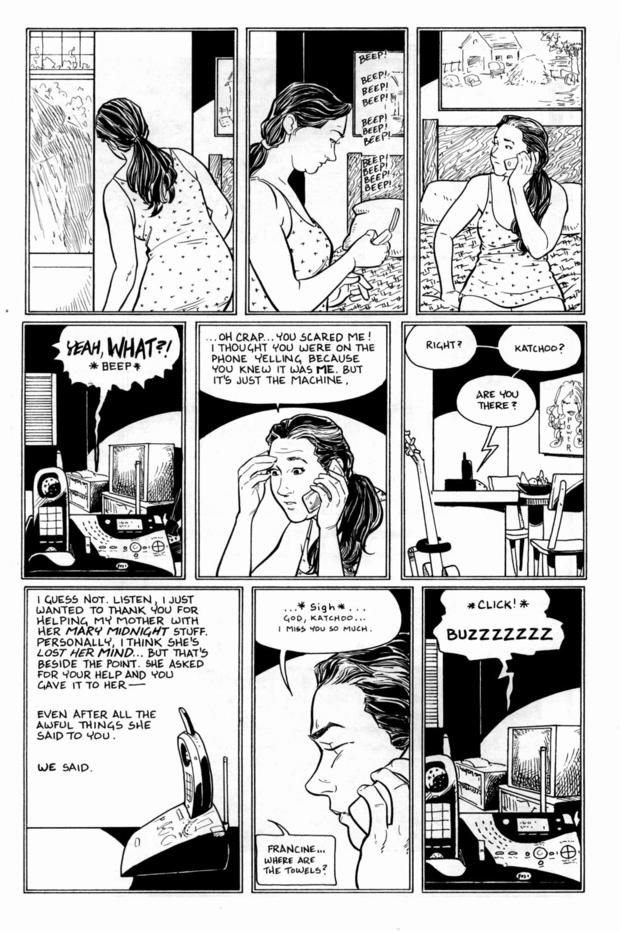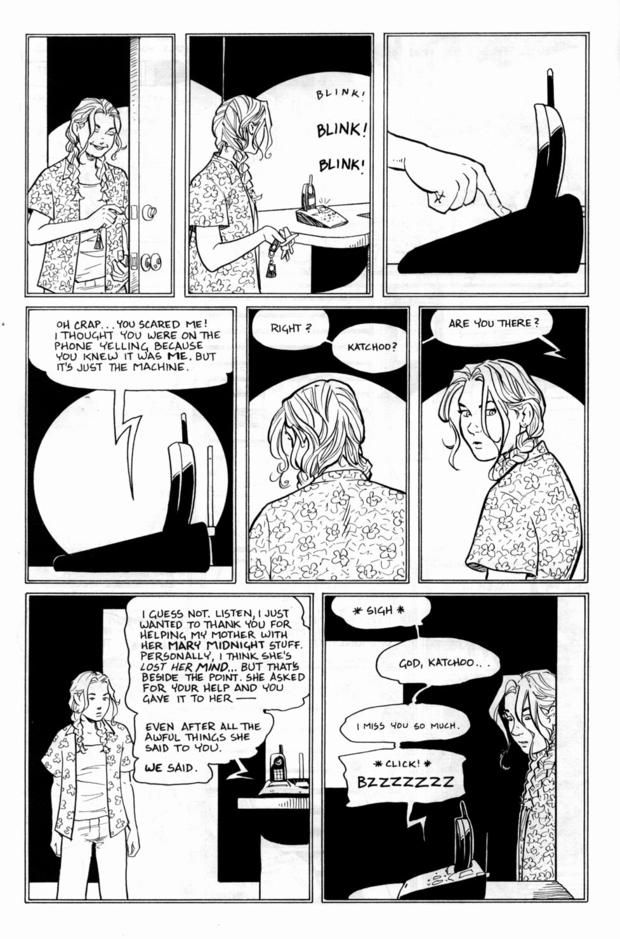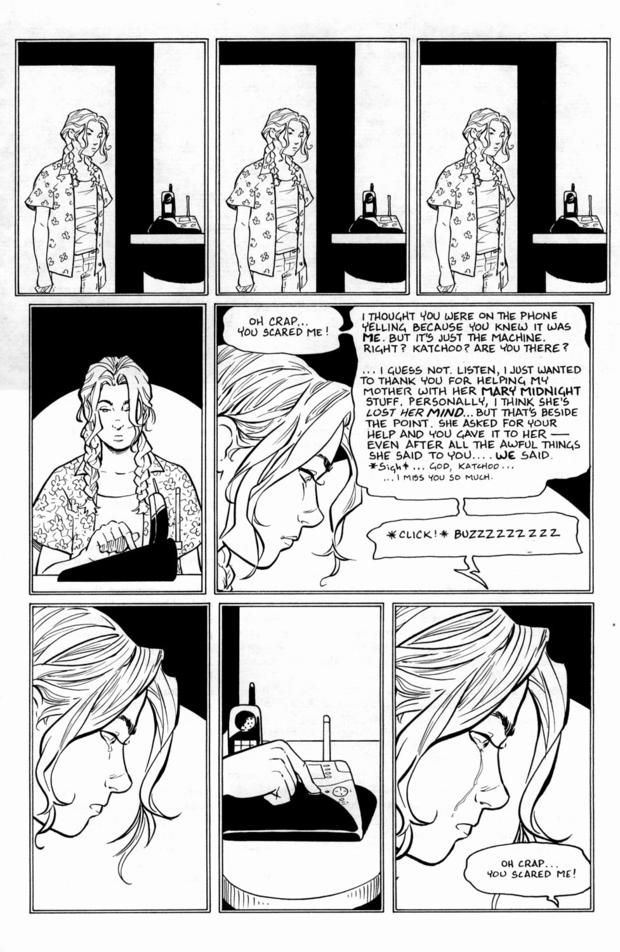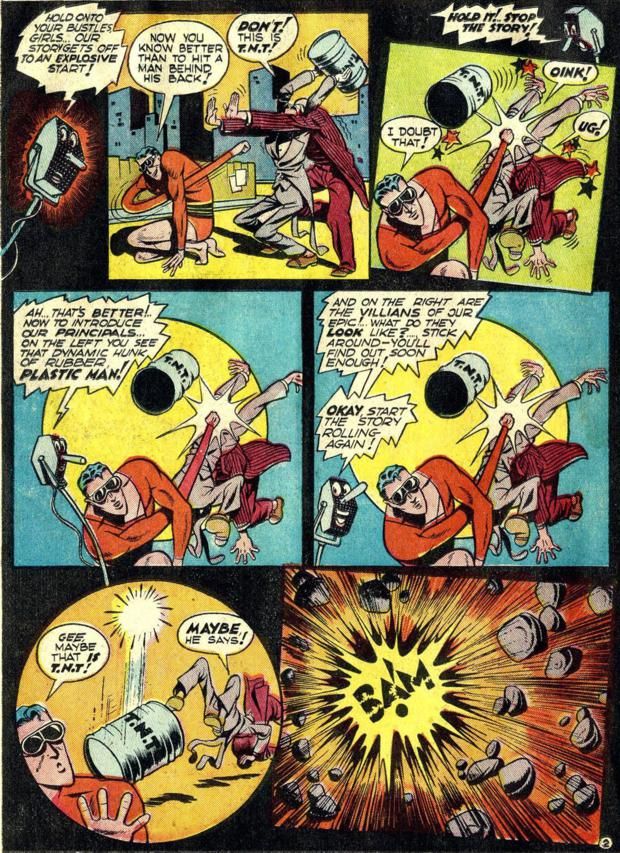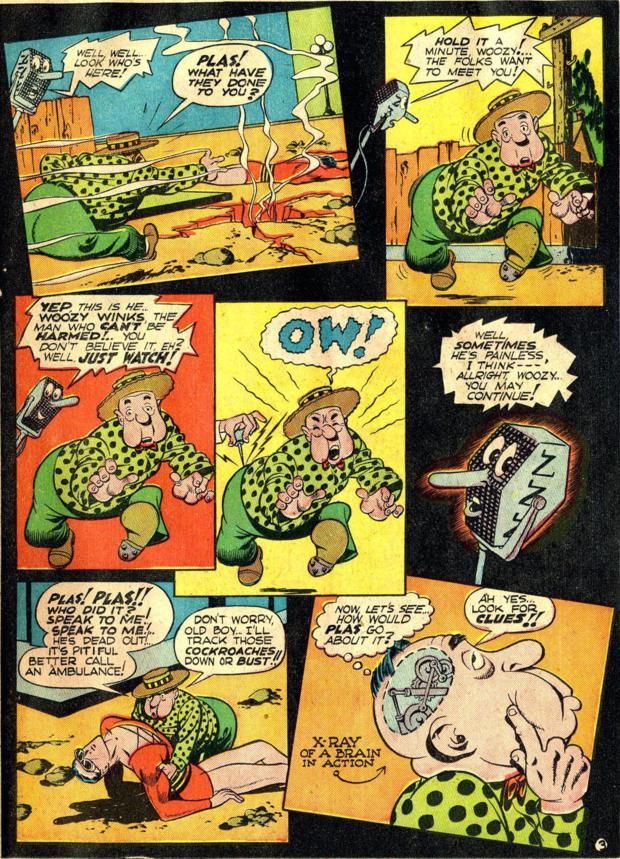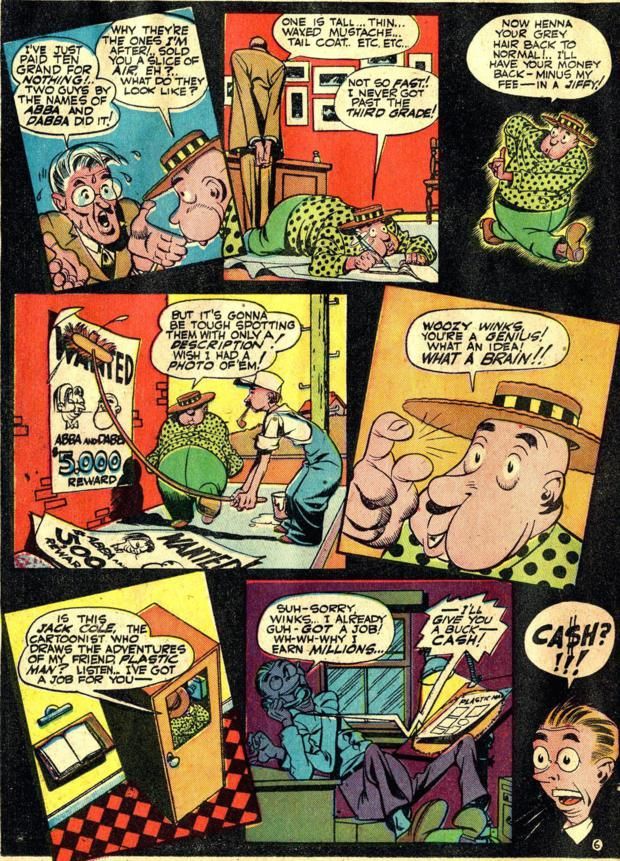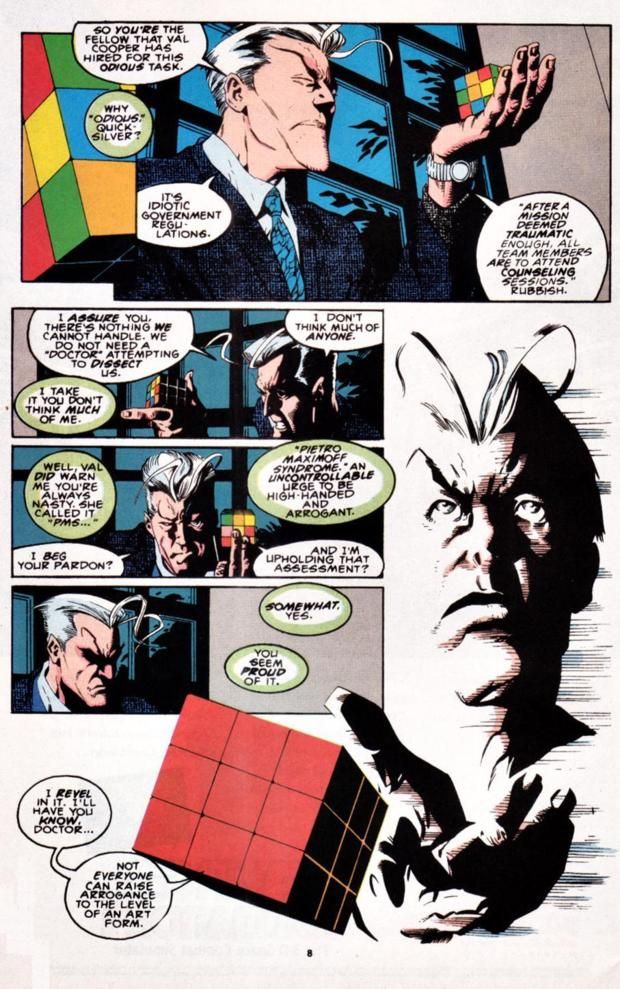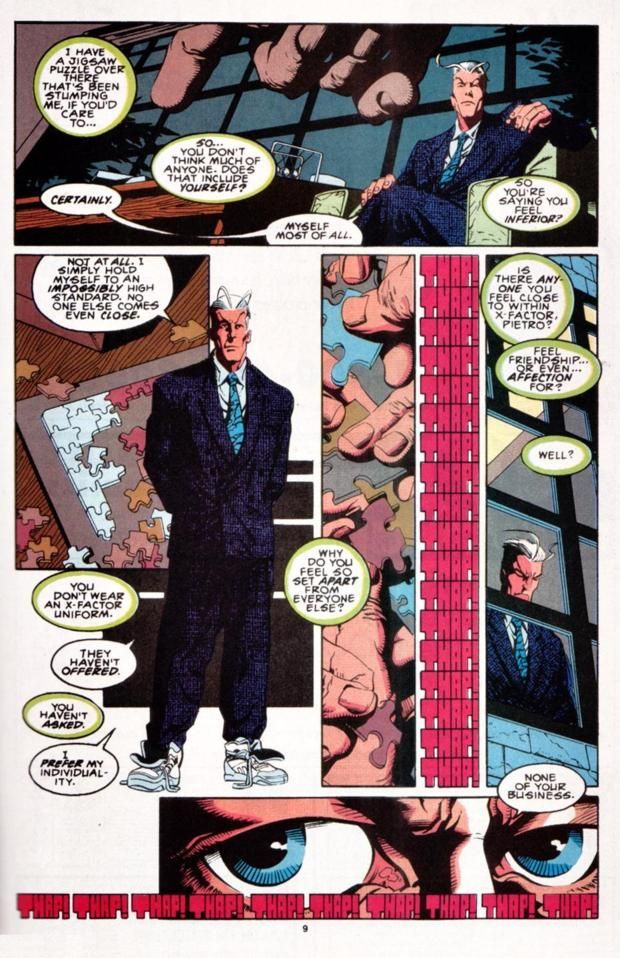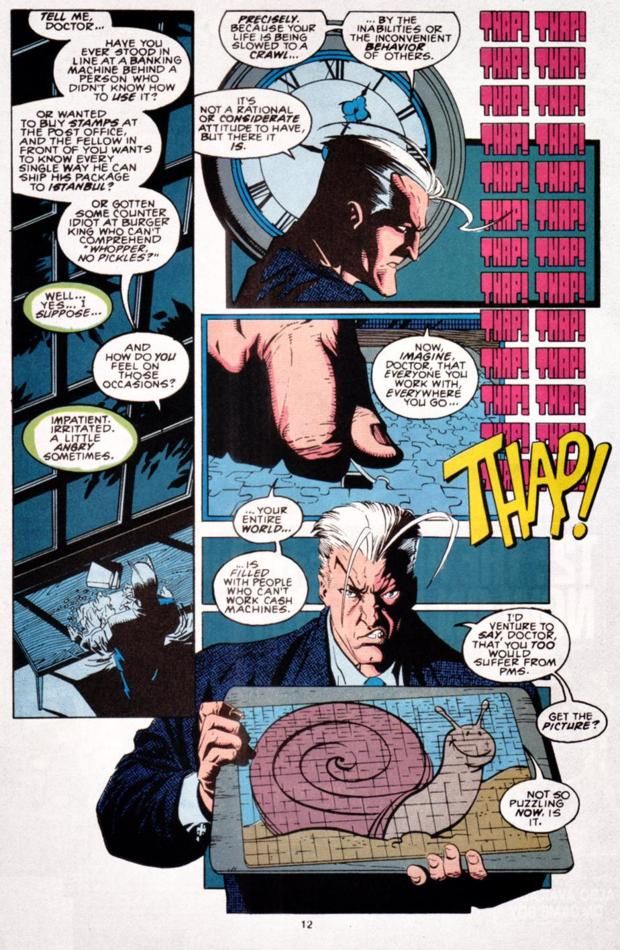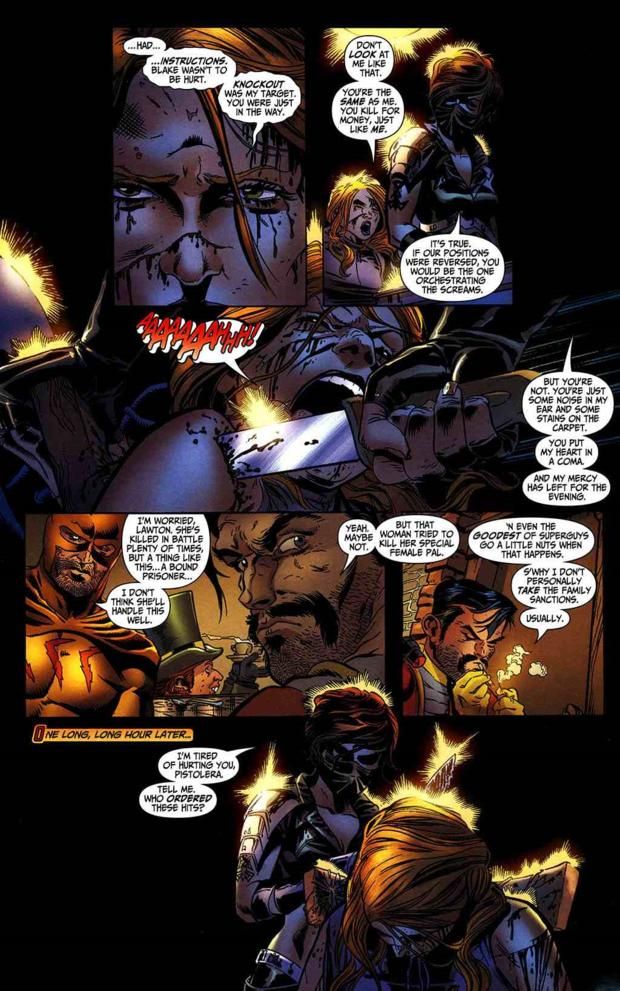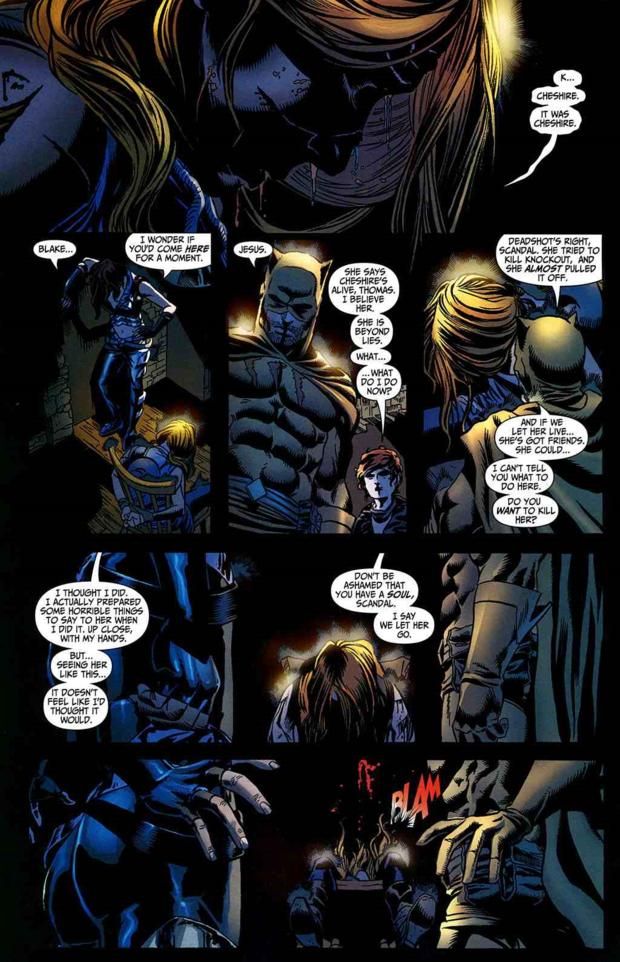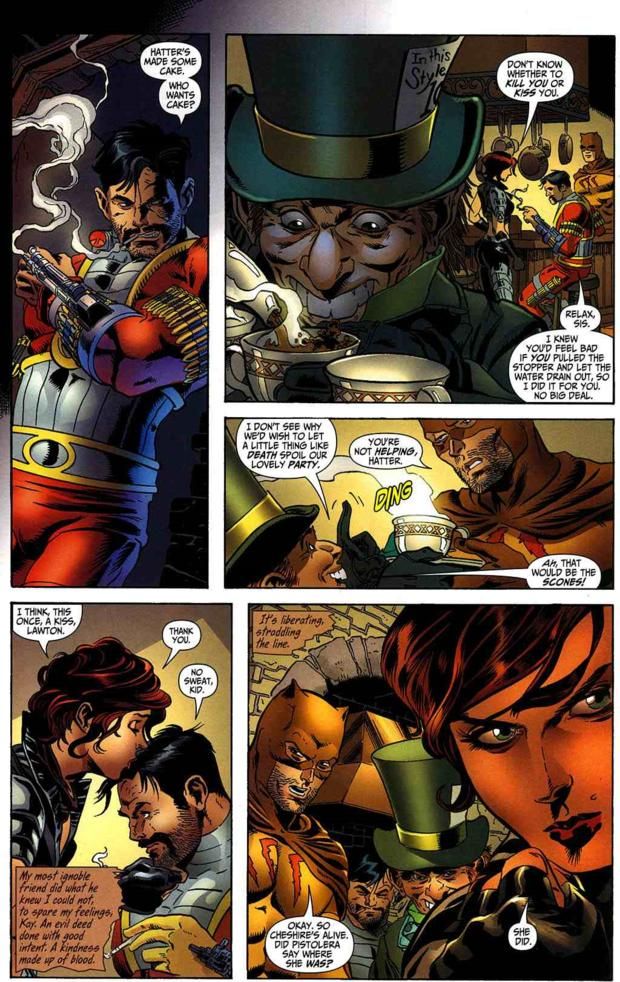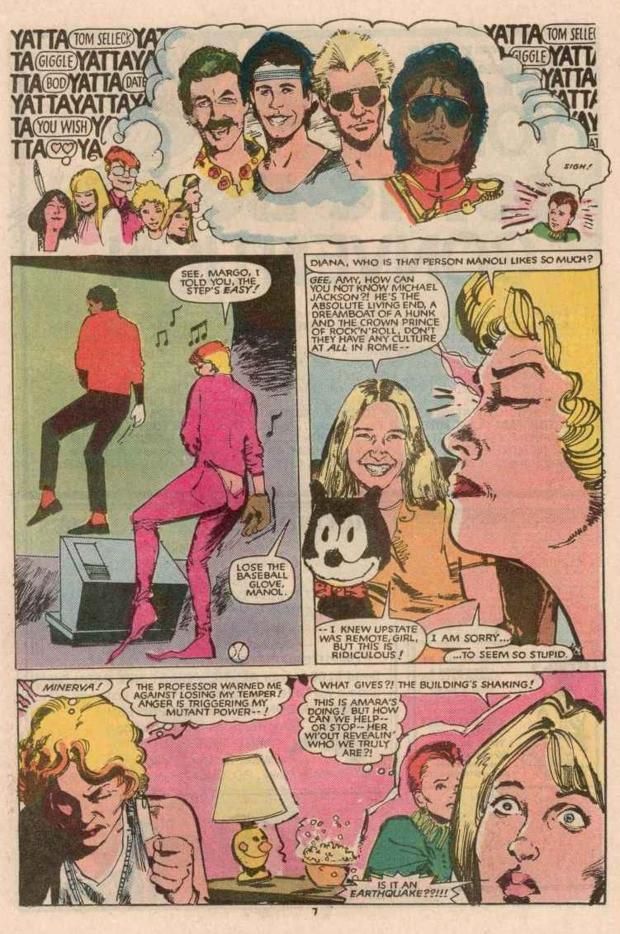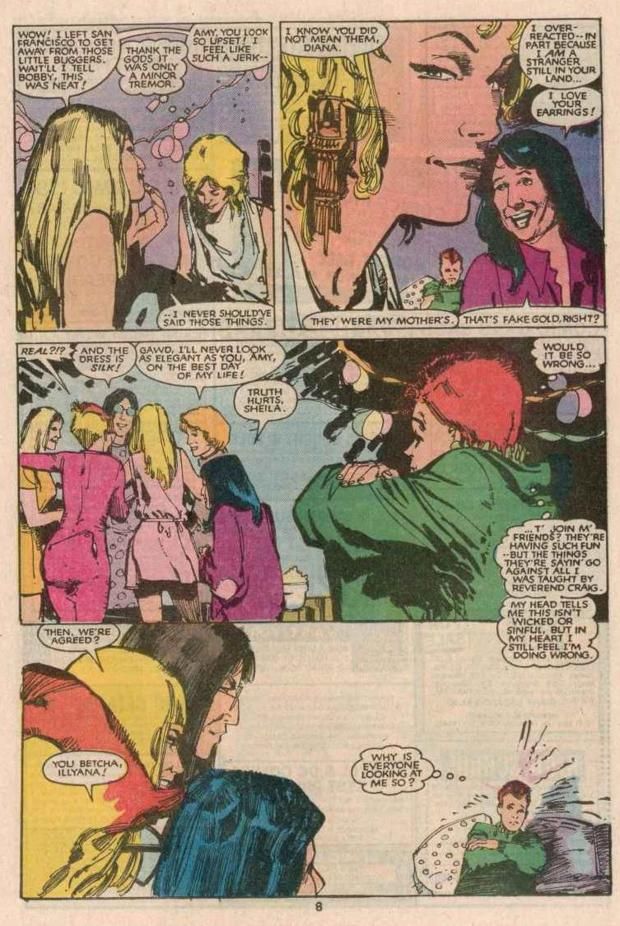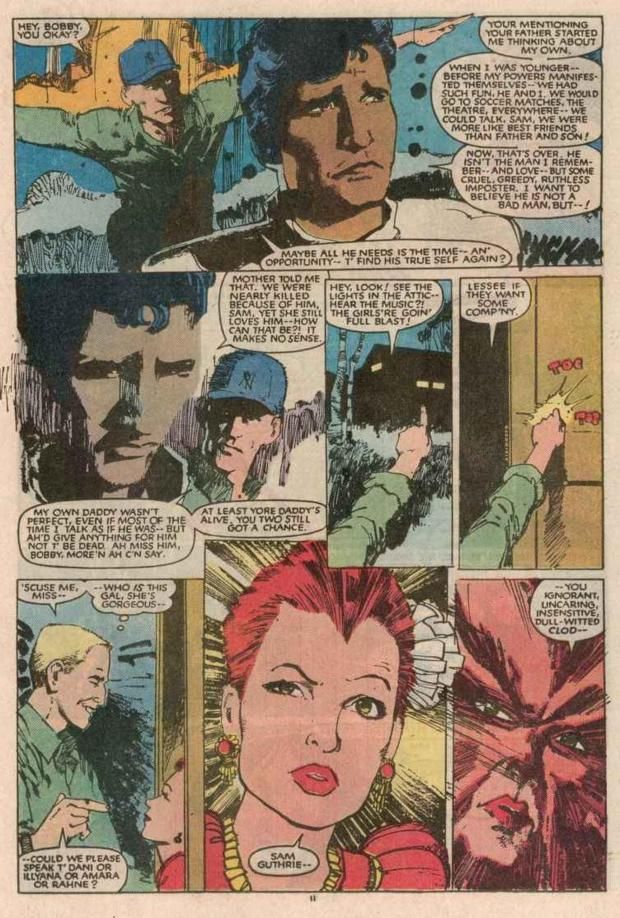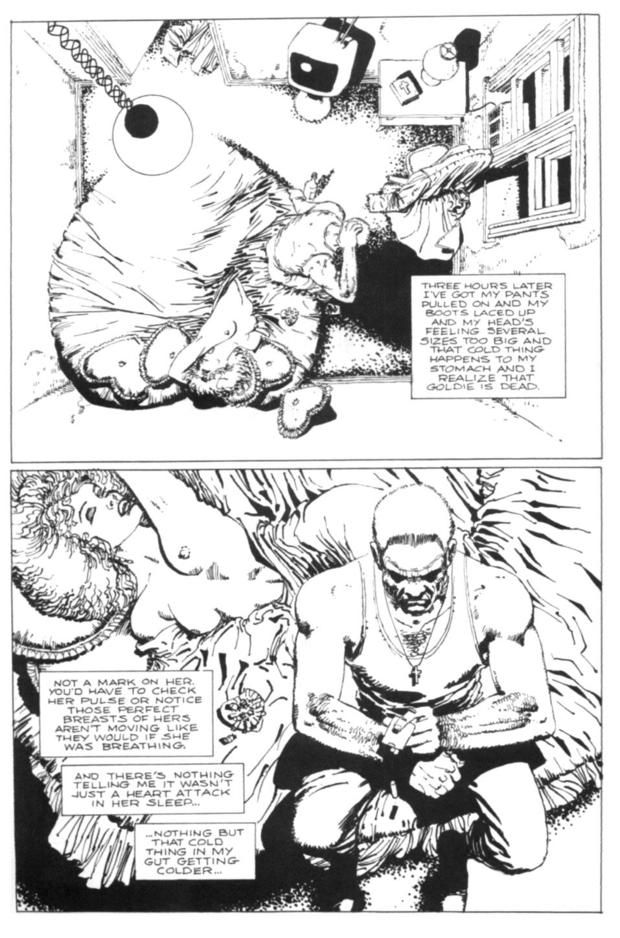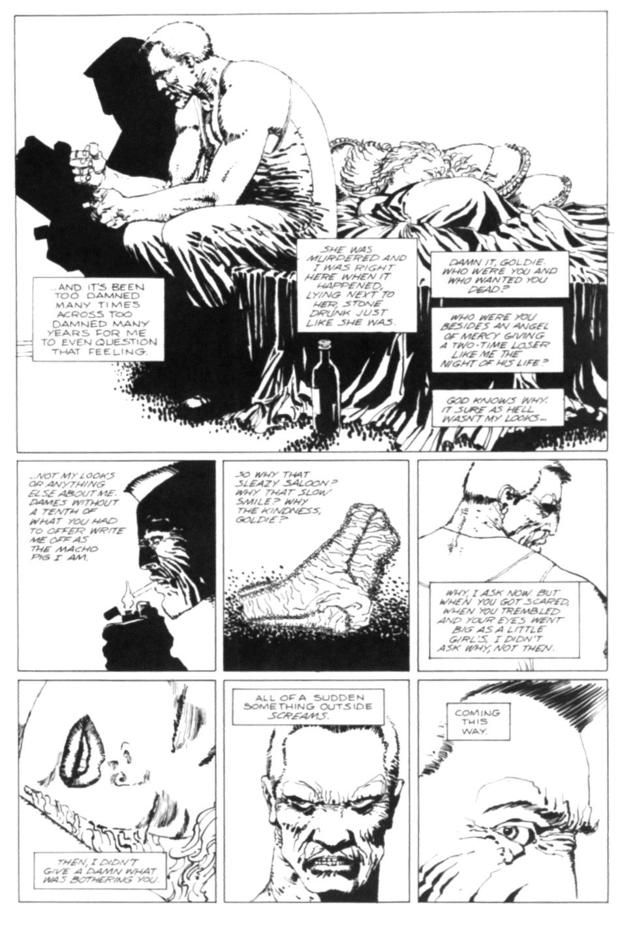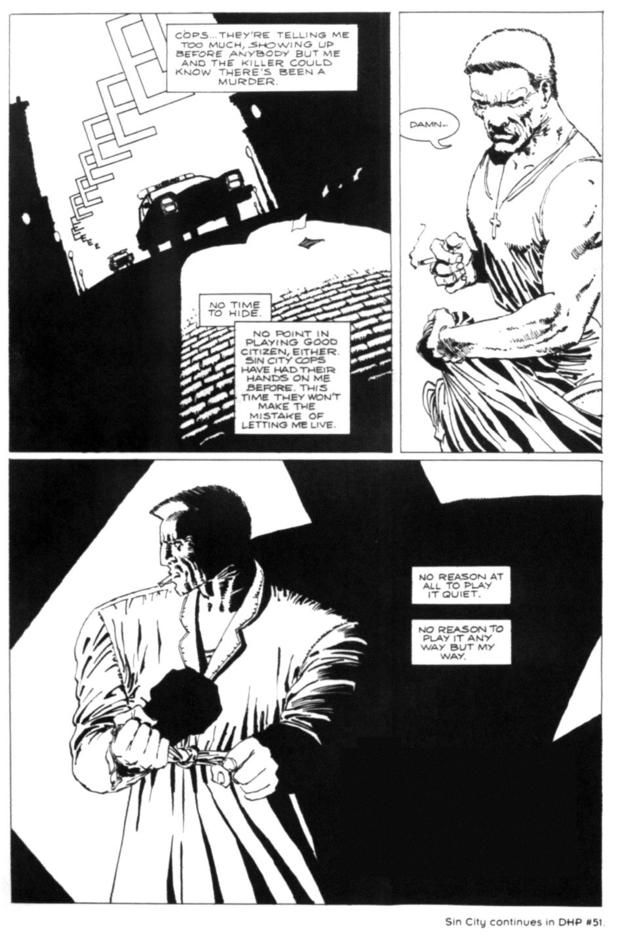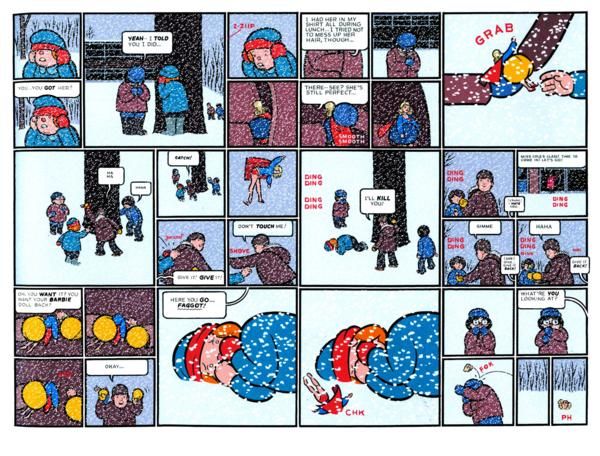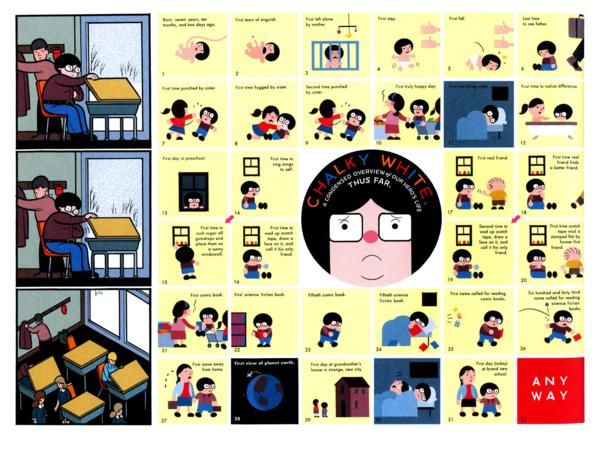The countdown begins...NOW!
You voted, now here are the results of your votes for your favorite comic book creator runs of all-time! The top ten will be posted this first day and then we'll be going to five runs a day for most of the month. Here is a master list of all of the runs revealed so far.
100. Daniel Clowes’ Eightball – 83 points
Eightball #1-23
Eightball was Daniel Clowes' long-running comic book series (published by Fantagraphics) where Clowes used to house his trademark offbeat examinations of the human spirit. For most of Eightball's run, individual issues served as parts of stories that would be collected into graphic novels. Perhaps most famous was Eightball #11-18, titled Ghost World, which viewed the life of a disaffected young woman named Enid. It was adapted into an acclaimed film, as was an earlier Eightball story titled Art School Confidential.
In this excerpt from Ghost World, Enid and her friends discover that detachment is not always what it is cracked up to be...
After another three issues of Eightball were collected into the acclaimed graphic novel, David Boring, the final two issues of Eightball were basically graphic novels in and of themselves. Since he has begun essentially just doing graphic novels, Clowes has ended Eightball and is now doing individual graphic novels.
99. Jim Steranko’s Nick Fury - 84 points
Strange Tales #155-168, Nick Fury: Agent of S.H.I.E.L.D. #1-5
Jim Steranko used the Nick Fury feature in Strange Tales to do broad, epic spy stories featuring Marvel spy star, Nick Fury and his spy organization S.H.I.E.L.D. Eventually, the series graduated into its own feature.
In the very first issue of Nick Fury, Agent of S.H.I.E.L.D., Steranko puts on a clinic of sequential storytelling as well as a great twist to kick of a story...
Steranko's work was also unusually sexy for the time. Marvel literally edited Steranko stories because they were deemed too sexy. Eventually, though, while Steranko was able to do a great feature in a two-feature comic book, he was not able to hold up to the grind of a full-sized monthly comic book and left the series after only a few issues.
98. Stan Lee and Jack Kirby’s Thor/Tales of Asgard – 89 points (2 first place votes)
Journey Into Mystery #97-125, Thor #126-177,179
As great of a creator as Jack Kirby was, he was that much better when he actually felt a specific interest in the work he was doing, so readers of Journey Into Mystery and Thor were quite lucky that Kirby definitely seemed to be into the idea of the gods of Asgard!
Neither Lee nor Kirby even worked on most of the early Thor stories in Journey Into Mystery, but both slowly worked their way back into the comic, and starting in #97, they worked on every issue together for about eighty issues, all told.
In their very first issue together, they began what they are probably most known for during their run, their classic "Tales of Asgard" backup, which allowed them to expand the mythology of Thor and Asgard. All the work Walt Simonson did on Thor would have been for naught if Lee and Kirby had not established all the great characters and situations they did during their run.
Here's an example of one of those great Tales of Asgard stories...
The run ended when Kirby left to lay the groundwork for a whole NEW generation of gods, the New Gods of the Fourth World.
97. Terry Moore's Strangers in Paradise – 90 points
Strangers in Paradise Vol. 1 #1-3 (Antarctic Press), Vol. 2 #1-13 (Image Comics/Abstract Studio), Vol. 3 #1-90 (Abstract Studio)
Terry Moore's Strangers in Paradise was one of the biggest independent hits of the 1990s, which surprised many when it first debuted a small, self-published three-issue mini-series in 1993.
The series follows the lives of two best friends, Francine and Katchoo, who are about as close as you can get - although Katchoo would like them to be even closer (you know, romantic-like).
That alone would cause enough dramatic tension for a series, but Moore also added newcomers David and Casey, who were part of this almost/sorta/kinda love quadrangle, while Moore introduced a number of other interesting supporting characters over the years who gained more prominence as the book went on.
Moore's greatest asset was his handling of emotional issues and character interactions. If he was not so good at it, the book would have collapsed under the weight of all the soap opera-esque love stories. Luckily, Moore grounded the work, so it felt real.
Here is a great example from one of the later issues, where the two main characters, Francine and Katchoo have been estranged for awhile...
Powerful work. Moore really knows how to hit his beats.
His artwork was light, but expressive - and he even managed to handle action fairly well when the script called for it (which was not often, although there were a few notable stories with some action).
96. Jack Cole's Plastic Man – 91 points
Police Comics #1-90, Plastic Man #1-26
Jack Cole was one of the most inventive artists of the Golden Age, and he really went hogwild with his creation, Plastic Man, within the pages of Police Comics and Plastic Man's own title.
Plastic Man could basically become anything - so that gave an artist as creative as Cole a lot of freedom to draw basically whatever HE wanted to draw, so he would use Plastic Man to tell all sorts of bizarre, slapstick-y stories that hold up surprisingly well to this day.
Here is one from Police Comics #20...
With Plastic Man out of the picture, Woozy has to win the day by himself, which proves to be difficult, so he asks a familiar face for help...
I love the inventiveness of the fourth wall being broken as well as the self-deprecating humor Cole uses.
Cole left the book towards the end of the 1940s and the book was done by imitators under his byline. He returned towards the end of the series' run but it was too late.
95. Peter David’s 1st Run on X-Factor – 92 points (1 first place vote)
X-Factor (Volume 1) #70 – 90
In what has become a bit of a pattern when it comes to acclaimed comic books, in 1991, when Peter David took over X-Factor, the book was not exactly the highest profile comic book. The first 69 issues starred the original members of the X-Men, but in 1991, X-Men was expanded to two comic books, and the original members rejoined the X-Men, leaving X-Factor without any team members.
So what David did was put together a team made up of the characters that no one wanted in the other X-Men titles, namely Havok, Polaris, Guido, Madrox the Multiple Man and Wolfsbane. In the first issue, David added Quicksilver, as well. The team worked for the government (following up the disastrous Freedom Force team) and was led by Val Cooper.
With the amount of minor characters in the book, David was given a lot more freedom to do what he wanted, so he treated the book as a humor title, much in the same vein as what Keith Giffen and JM DeMatteis had done five years earlier with their Justice League International comics.
This was not to say that the book was all fun and games, though, as David did work in a number of social issues into his run, particularly some rather poignant looks at families being given the option of testing to see if their unborn children were mutants, and if they were, given the chance to abort.
Larry Stroman was the artist on the first 10 or so issues of David's run, and a variety of artists followed him, most notably Joe Quesada, who produced perhaps the most acclaimed issue of the book, where the team are all forced to go see a shrink (Doc Samson), and David spent the issue investigating each of the personalities of the team, including probably the best take on Quicksilver's personality ever. Here is that take on Quicksilver, which is so good that I've seen other writers just directly quote it in comics to explain Quicksilver's behavior...
Sadly, as the comic market was going through a speculator boom, crossovers became a bigger deal, and David's run was getting interrupted more and more by crossovers (this is noted with the infamous issue of X-Factor that starred only Wolverine, Cable and Bishop - none of which, of course, were X-Factor characters), and his actual storylines kept getting the bump. So David decided it better to simply leave the book.
Luckily, David returned to the characters years later and has been working on the title again for a number of years.
94. Gail Simone’s Secret Six – 94 points (1 first place vote)
Villains United #1-6, Secret Six #1-6, Secret Six #1-36
The Secret Six first showed up as a tie-in to Infinite Crisis, with a team of villains, Catman, Deadshot, and Cheshire along with Ragdoll, Scandal Savage, and a Parademon worked for a mysterious Mockingbird. Eventually, Catman, Deadshot, Scandal and Ragdoll became the core of the group. The initial series was drawn by Dale Eaglesham, with Brad Walker doing the follow-up mini-series and Nicola Scott and Jim Calafiore doing the ongoing series. The only constant was writer Gail Simone and, of course, an ever-ending series of maladies headed towards this compelling collection of misfits and villains.
Simone maintained a fascinating mixture of humor and darkness throughout the series. The key element to the book, though, was the emotional connections that these rogues shared with each other (Bane became a major cast member in the ongoing series, as well. Other characters came and went, as well, with Simone/Scott creation Jeannette being the other longest-lasting new addition). Here is a great example of the bond between the team members from the first Secret Six mini-series (so after Villains United and before the ongoing series), where Scandal is trying to find out who tried to kill her lover...
Sadistic AND touching all at once. It is a difficult balance to strike and it was one that Simone struck well for more than five years, as this little series that could, well, did.
93. Chris Claremont's New Mutants – 95 points
Marvel Graphic Novel #4, New Mutants #1-54, Annuals #1-3
Almost all the votes were specifically for the run Claremont did with artist Bill Sienkiewicz, which lasted for New Mutants #18-31, 35-38, but enough just said "Chris Claremont's New Mutants" that I combined all of the votes into one "Chris Claremont's New Mutants."
New Mutants was the very first ongoing spin-off series of the X-Men, the first of many.
After introducing the characters in Marvel Graphic Novel #4, with artist Bob McLeod, Claremont and McLeod launched the ongoing series, which featured the adventures of Cannonball, Sunspot, Psyche, Karma and Wolfsbane, the newest students at Xavier's School for Gifted Youngsters.
Claremont had a fairly good eye for teen dialogue, and the book was an engaging place for stories of the teen mutants, but the book really went to another level when artist Bill Sienkiewicz came to the title, hot off of his acclaimed run on Moon Knight, where his art experimentation had begun to catch many reader's eyes.
Here, from issue #21, we see Claremont's keen sense of characterization mix with Sienkiewicz's design skills...
and after they've given Rahne a makeover...
Claremont eventually shifted the tone of the series to match Sienkiewicz's style, which was notably darker than most Marvel comics of the time, so Claremont's scripts also got darker, dealing with ideas of mysticism, mental disorders and bizarre psychic realities.
Oh, and the group all liked to watch Magnum PI, which was cool, because I like Magnum PI.
Sienkiewicz took some time off to work on a Daredevil project, then left the book for good with #38. Claremont held on for another year or so, before giving way to the editor of the title, Louise Simonson.
92. Frank Miller’s Sin City – 96 points (2 first place votes)
Dark Horse Fifth Anniversary Special, Dark Horse Presents #51-62, then a pile of mini-series, including A Dame to Kill For, The Big Fat Kill and That Yellow Bastard
In Sin City, Frank Miller developed a wonderfully brutal noir world where the tiniest piece of affection can change people's lives. That's the case with the very first Sin City story, where a woman named Goldie sleeps with a thug named Marv with the presumed intent of having him protect her. She ends up dead the next day anyways. However, their one night together has spurred Marv on to do whatever it takes to avenge her death. Check out Marv's decision-making, with Miller's purple prose and striking use of noir shadowing...
While Marv was the first citizen of Sin City we've met, he was far from the last, as Miller has shown us different characters all getting into various pieces of trouble. Miller notably has gone back and forth in time, which has allowed him to use popular characters that have been killed. And Miller has introduced a lot of popular characters in this series.
91. Chris Ware's Acme Novelty – 97 points (1 first place vote)
Acme Novelty Library #1-current (#20)
One of the most innovative voices in comics, Chris Ware's Acme Novelty Library is the ongoing series where Ware (much like Clowes did with Eightball) serializes his stories before collecting them into individual books. This is where Ware's highly acclaimed novel, Jimmy Corrigan: The Smartest Kid on Earth, was original published.
Ware is currently serializing Rusty Brown, yet another breathtakingly nihilistic piece by one of comic's modern masters.
Rusty Brown (which has been running since #16, with a break for #18's tie-in to Ware's Building Stories) is the tale of an exceptionally nerdy young fellow living in Omaha, Nebraska in the 1970s. It is also the story of Chalky White, another exceptionally nerdy boy who just moved to Omaha with his sister and his mother.
In the first part, Chalky is given Rusty's desk at school - what no one knew at the time was that Rusty had brought his cherished Supergirl action figure to school with him (against the rules), so Rusty, naturally, has been freaking out about the fate of Supergirl. Chalky, meanwhile, upon seeing the Supergirl figure, realize that he and Rusty likely have a lot in common - so how does he manage to relate to Rusty?
I'm going to show you a quick scene of the two interacting...
And a stunning depiction of Chalky's life to this point...
Ware used a similar approach on the amazing #20, which told the entire life of a minor character from Rusty Brown (#19 spotlighted Rusty's father).
Each issue of the book is done in different ways, from a standard looking book to over-sized poster book, all based on Ware's feeling for that issue. The series began in 1995. It is up to issue #20.

